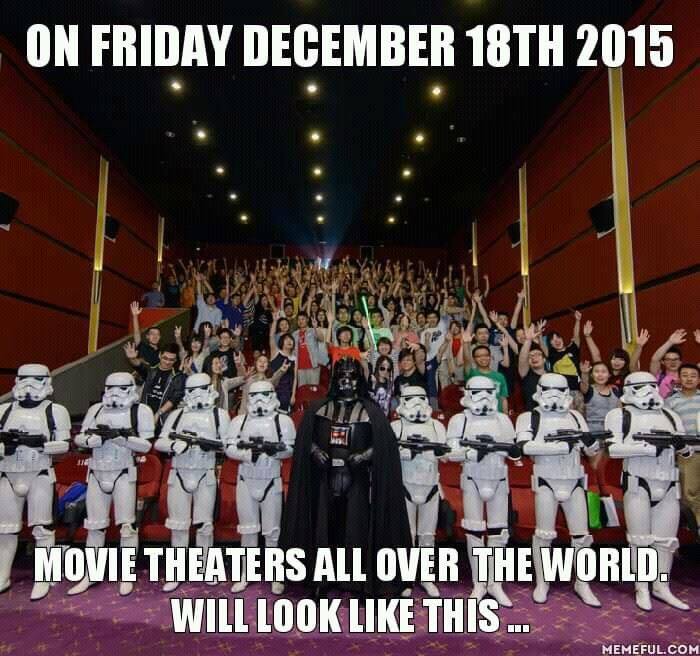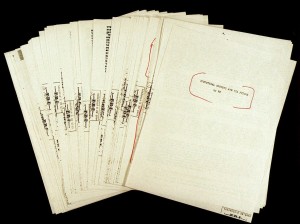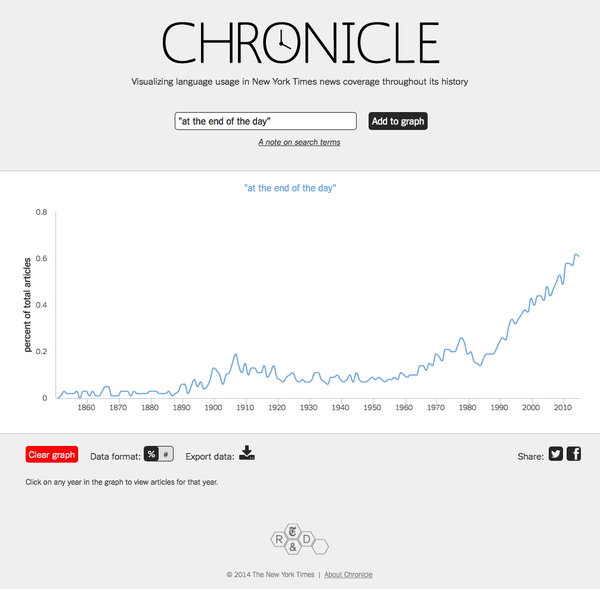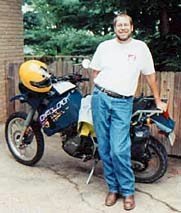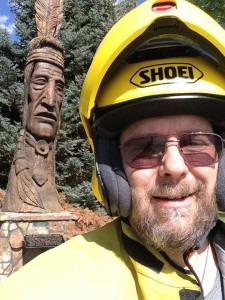 I moved back to the cusp of the West a little more than 7 years ago, and up until now I’ve viewed my motorcycling home as being back in the Southeast. Yes, I took a ride down into Kansas, Oklahoma, the Texas panhandle, New Mexico and Colorado a couple of years ago as part of my Iron Butt Association National Parks Tour, but I’ve always thought of West Virginia, Virginia, North Carolina, Kentucky and Tennessee as my natural habitat to go riding. The Blue Ridge Parkway, The Cherohala Skyway, US 250 across West Virginia, those were the destinations I always dreamed of.
I moved back to the cusp of the West a little more than 7 years ago, and up until now I’ve viewed my motorcycling home as being back in the Southeast. Yes, I took a ride down into Kansas, Oklahoma, the Texas panhandle, New Mexico and Colorado a couple of years ago as part of my Iron Butt Association National Parks Tour, but I’ve always thought of West Virginia, Virginia, North Carolina, Kentucky and Tennessee as my natural habitat to go riding. The Blue Ridge Parkway, The Cherohala Skyway, US 250 across West Virginia, those were the destinations I always dreamed of.
And in one sense, none of that has changed. I still dream of riding in the Blue Ridge Mountains, but after my recent trip to chase down Whispering Giants in Colorado and central Wyoming I can’t wait to get back into the Rocky Mountains and points west.
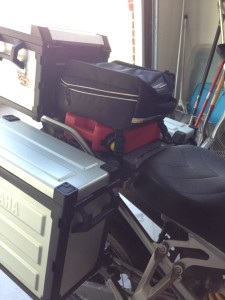 As I’ve mentioned in earlier posts, I’ve spent my motorcycle time this summer on the Trail of the Whispering Giants as part of a fantastic Team Strange Grand Tour. Over Labor Day weekend I rode out west to track down two more of Peter Wolf Toth’s sculptures.
As I’ve mentioned in earlier posts, I’ve spent my motorcycle time this summer on the Trail of the Whispering Giants as part of a fantastic Team Strange Grand Tour. Over Labor Day weekend I rode out west to track down two more of Peter Wolf Toth’s sculptures.
Before heading out on this ride, I made one new addition to my bike, a 1-gallon Rotopax gas can on a luggage rack that takes the place of my back seat. Just in case…
Giant #11 – Loveland, Colorado, Sept. 5
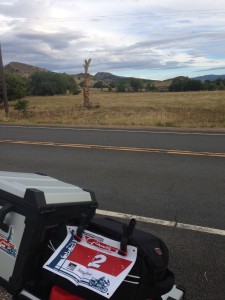 Friday afternoon I rode out from Kearney, Neb. to Greeley, Colorado to meet up with retired Methodist minister and active long distance rider Phil Tarman, who a couple of years ago took an multi-month “Epic Ride” to celebrate his retirement. Had a bit of rain coming into Greeley, which was welcome just because it cooled things off a bit.
Friday afternoon I rode out from Kearney, Neb. to Greeley, Colorado to meet up with retired Methodist minister and active long distance rider Phil Tarman, who a couple of years ago took an multi-month “Epic Ride” to celebrate his retirement. Had a bit of rain coming into Greeley, which was welcome just because it cooled things off a bit.
Bright and early Saturday morning, I headed on west up Highway 34 out of Greeley and past Loveland. Were it not Labor Day Weekend, I could have happily headed up toward Estes Park and Rocky Mountain National Park, but the holiday weekend crowds held little appeal.
I found Loveland’s Whispering Giant in a pasture just a few miles out of town.
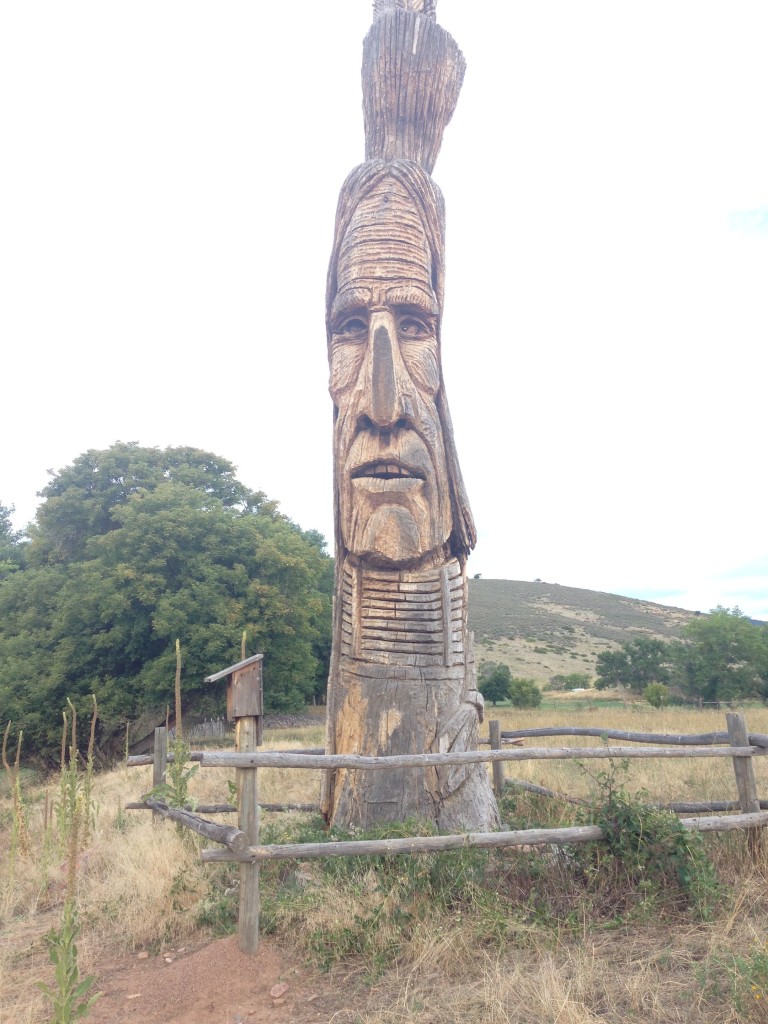
There was no plaque here, no identification, just the Whispering Giant with a small fence to keep the cows at bay. This giant has definitely seen better days and is being held together with bolts and a heavy wooden support.
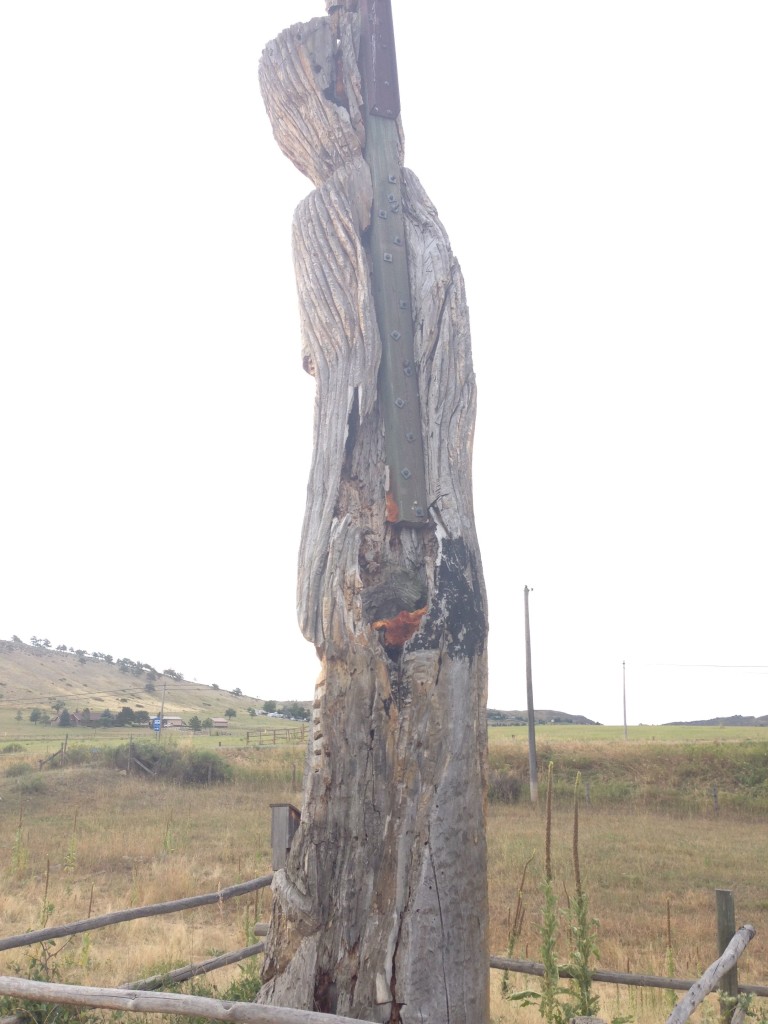
From there it was heading north up into central Wyoming – one of the more remote areas I’ve ever gone riding in. I stopped in Laramie for gas and something cold to drink, and while at the gas station I ran into Jim and Linda on their Harley from Broken Bow, Nebraska. It turns out that Linda is a night checker at the HyVee in Kearney that my wife and I often shop at.
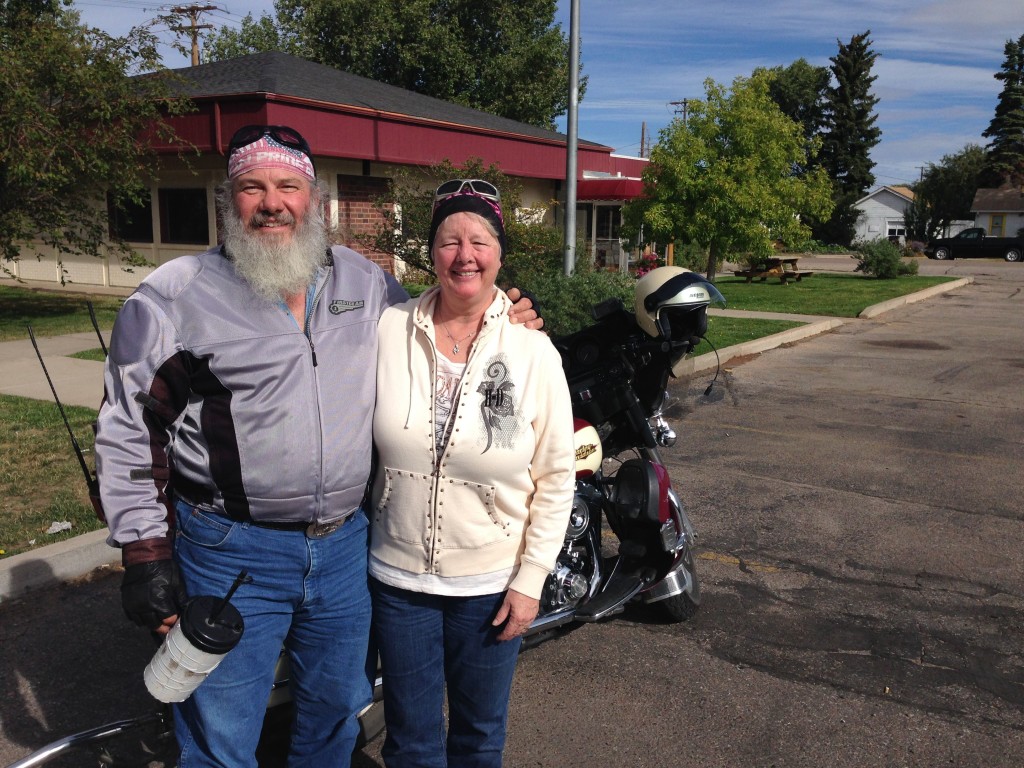
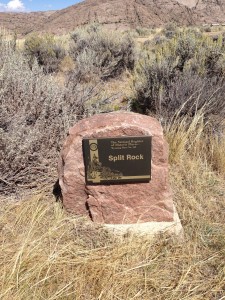 After a run west on Interstate 80, it was time to head north on US 287 leading up to a truly remote State Highway 135 aka Sand Draw Road. To give you an idea of what Sand Draw Road is like, my Butler Motorcycle Map has it labeled as a specific category of road – a Lost Highway. (“The faded paint of a centerline, or crumbling shoulder are all that remain to remind us of a more purposeful past. They are highways that seem lost in time.”) Pretty much. Also along this route was the barely marked, impossible to find on any map Split Rock National Historic Site. A landmark on the Oregon Trail, this was a particularly interesting little unit of our National Parks System. Had I more time, I could have happily headed out on a hike her to explore this spot a little more.
After a run west on Interstate 80, it was time to head north on US 287 leading up to a truly remote State Highway 135 aka Sand Draw Road. To give you an idea of what Sand Draw Road is like, my Butler Motorcycle Map has it labeled as a specific category of road – a Lost Highway. (“The faded paint of a centerline, or crumbling shoulder are all that remain to remind us of a more purposeful past. They are highways that seem lost in time.”) Pretty much. Also along this route was the barely marked, impossible to find on any map Split Rock National Historic Site. A landmark on the Oregon Trail, this was a particularly interesting little unit of our National Parks System. Had I more time, I could have happily headed out on a hike her to explore this spot a little more.
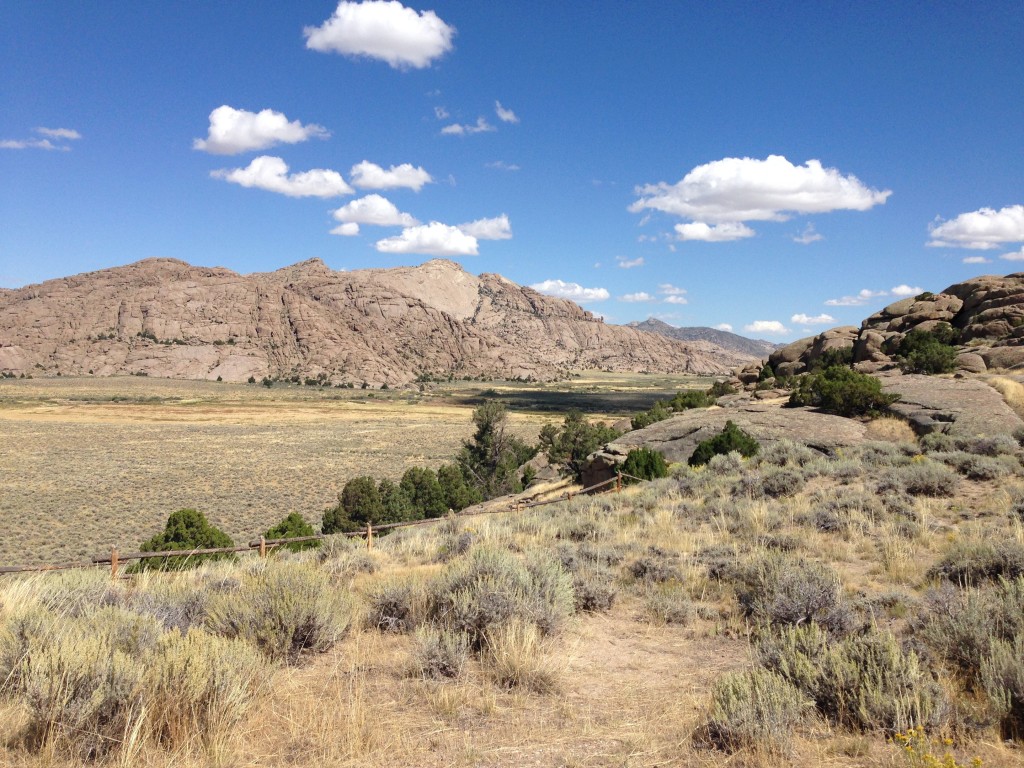
Giant #12 – Worland, Wyoming, Sept. 5
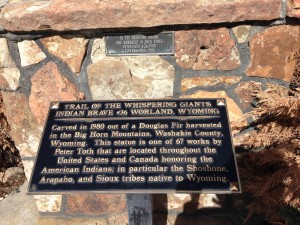 From there it was up through Wind River Canyon, an absolutely spectacular segment of US Highway 20 that no motorcyclist should miss. Again, no time to stop in the hot springs in Thermopolis. I have to keep moving on to Worland, home of my next Whispering Giant. This one was an easy find on the corner of Wasaki County Courthouse lawn.
From there it was up through Wind River Canyon, an absolutely spectacular segment of US Highway 20 that no motorcyclist should miss. Again, no time to stop in the hot springs in Thermopolis. I have to keep moving on to Worland, home of my next Whispering Giant. This one was an easy find on the corner of Wasaki County Courthouse lawn.
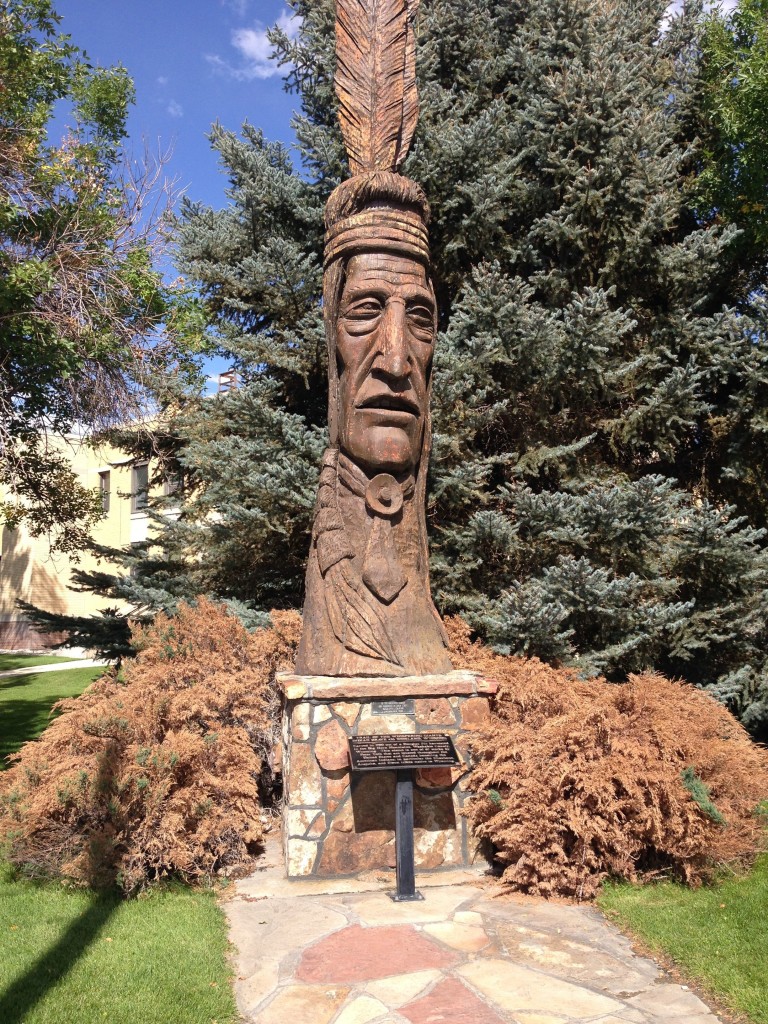
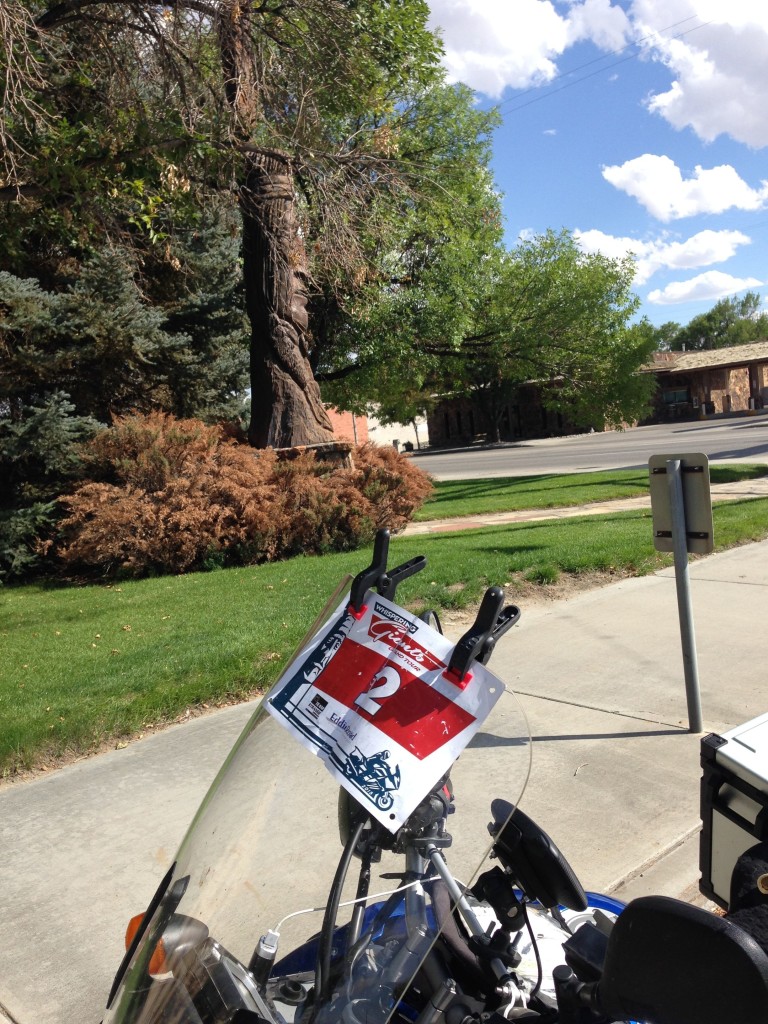
From Worland it was time to head back east on US 16 aka the Cloud Peak Skyway that twists and turns its way up from around 4,000 feet, all the way up to nearly 10,000 feet, and then back down to near 4,000 feet – all with very little traffic. Once coming back to civilization in Buffalo, Wyoming, it was time to hop back onto Interstate 25 and hightail it down to Casper, Wyoming.
The next morning was breakfast with my high school friend Sue Cunningham Burk and her husband, Richard. I then closed out the ride with a run down Nebraska State Highway 2 through the Nebraska Sand Hills. It’s a ride I’ve long wanted to take, but this was my first chance to see the truly beautiful part of my state. If you’ve only seen the Platte River Valley that I-80 follows across Nebraska, you really haven’t seen what the state has to offer.
I arrived home about dusk Sunday evening having really connected to my Western motorcycling soul. I still need to get back to the Blue Ridge Parkway, but I’ve got these maps of Colorado, Wyoming, Utah, and Idaho that keep calling my name. And there’s still that Whispering Giant in Bismarck, North Dakota (Mandan, actually, but close enough) that I really would have liked to have visited before the Grand Tour ends Oct. 31st….
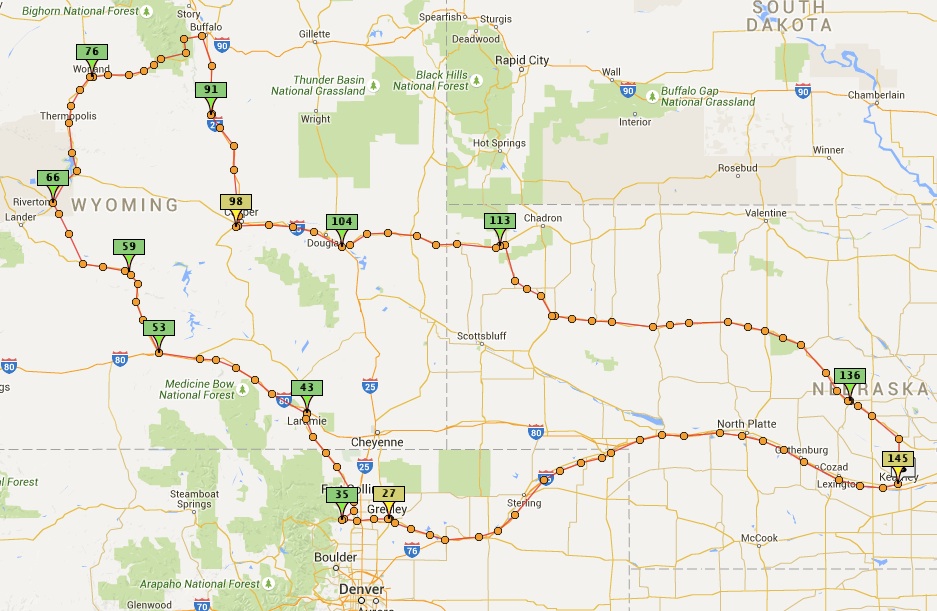
Map of my Labor Day Weekend Ride
This story starts here.
